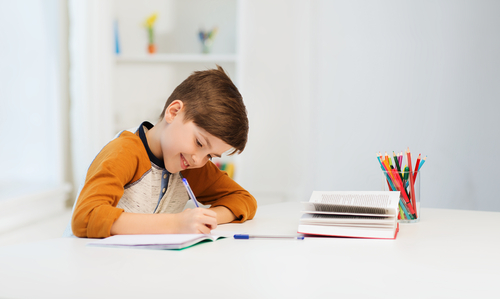Fresh off the excitement of the holiday season, from a child’s perspective, the answer to the question ‘What’s your New Year’s resolution?’ might not be as clear-cut as it is for their parents.
Identifying an area for improvement can be puzzling for kids. Many of the common resolutions that adults often espouse such as smoking cessation or getting in shape generally aren’t issues for 10-year-olds. And for many children, especially those who may have attention disorders, the mere act of thinking of something to improve can be daunting enough.
According to a study released by fitness tracking and social media platform Strava, January 19 is the day that people of all ages tend to give up on or forget about their New Year’s resolutions. Now that we’ve had a week or so to ruminate on this fact, let this year you help your family buck the trend and help instill in your child a sense of goal-keeping and the feeling of accomplishment that will follow.
Here are some expert tips on how to help your child make goals happen in 2020.
How to explain New Year’s resolutions to a child

For starters, the concept of a New Year’s resolution is abstract. Considering that for the typical second grader a year is more than 14 percent of their lifespan, the idea of taking that long to work on a topic can fall beyond a child’s comprehension.
“Children tend to be very concrete thinkers, so abstract goals like ‘eat healthy’ or ‘be a good listener’ are hard for them to understand. This can affect their motivation,” says Katie Lear, a licensed therapist in private practice in Davidson, North Carolina who specializes in child counseling for anxiety disorders and trauma.
Moreover, while life experience can make a year seem a long time ahead, children might not even have the physical capability for mapping out goals for that period of time. “The last part of the brain to develop in children and adolescents in the part responsible for long-term planning and consequences for actions,” says Brent Sweitzer, a child counselor and registered play therapist in Cumming, Georgia. This means many children need guidance in seeing the connection between short-term actions and long-term results.
Break down long-term goals into smaller, short-term tasks.

Big-picture thinking might work for TED talks. But when it comes to helping your child set goals, child psychology experts agree that breaking down goals into steps that seem within reach is the way to go. This can be a game for the child—and a helpful exercise that can help children with other tasks involving sequencing, such as software coding or reading comprehension.
“It’s helpful to children and adolescents to talk aloud to identify the physical steps needed that are within their control to reach a goal or outcome,” Sweitzer continues. “The more they can get practice in regularly identifying what those next actions are—those individual steps—the more likely they are to follow through on their resolutions.
Figure out what matters to a child and why.

Ever procrastinate on a task because it just doesn’t interest you? Unless roof gutter cleaning or pre-move packing are hobbies of yours, most likely the case is yes. Lo and behold, personal interest in a topic also helps motivate children as well.
When helping children identify a goal, rather than assigning them a task such as “get homework done within an hour,” help them identify what really makes them tick. “Children need to be taught to examine and find two or three core values,” says Natalie Mica, a licensed professional counselor and a Texas certified school counselor based in Houston.
“These are ‘north star’ values that guide goal-setting across all areas of life,” she continues. She points out that for this exercise to be truly effective, it is crucial that the resolution or goal is something that the child actually holds dear—rather than something that the child thinks should be important—or an adult says is important.
Also, a child can more effectively reach a long-term goal if they can envision how that long-term achievement might take shape. Take saving money for a large purchase, for example. Along the lines of helping the child break down the goal into parts (e.g. saving 20 percent of their weekly allowance for six months), they can imagine how they will feel after hitting that goal: Being able to play with that fancy doll or wear those top-quality shin guards on the field will instill a sense of accomplishment.
Sweitzer encourages parents to have fun with this: how will this goal look, smell, taste, feel? “Invite children to draw or use other creative means of expression to get their five sense involved in the resolution they’ve identified.”
Establish an environment of encouragement.

Children and adults alike thrive in supportive environments. For a child—especially one who might have attention disorders—support can take the shape of providing an environment that is free of distractions and avoids multitasking. Children also learn from the adults around them. When a child is doing a behavior that aligns with their goal; say starting homework within 15 minutes of getting home from school, parents should compliment and praise them accordingly.
Adults can also model positive behaviors by sticking to their own resolutions. This can also help children see firsthand how a goal can come to fruition. Plus, depending on the resolution, children can take part. Healthy eating and exercise have a multitude of benefits for people of all ages; and while quitting smoking might not be an all-hands-on-deck family effort, everyone can enjoy cleaner air and the benefits of having a healthy adult at home.
A resolution is a promise that a person makes for themselves. While breaking down steps is key, they are but that: steps toward a goal and an opportunity to make some change. By framing a resolution as something children get to do for themselves, the sense of accomplishment can resonate and provide encouragement for future goals and segments of their lives.







